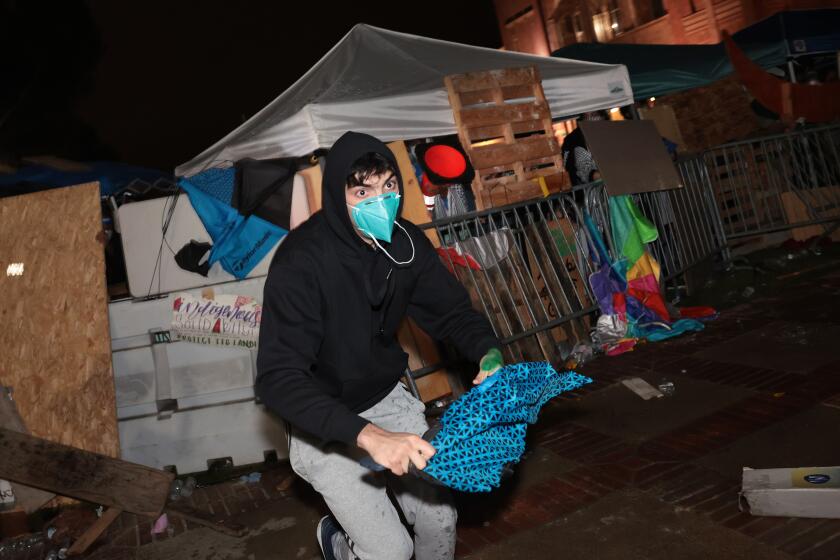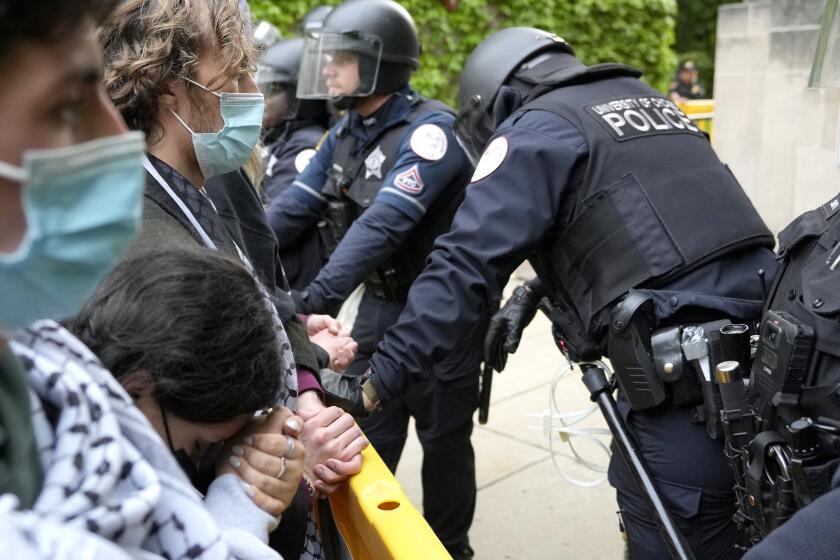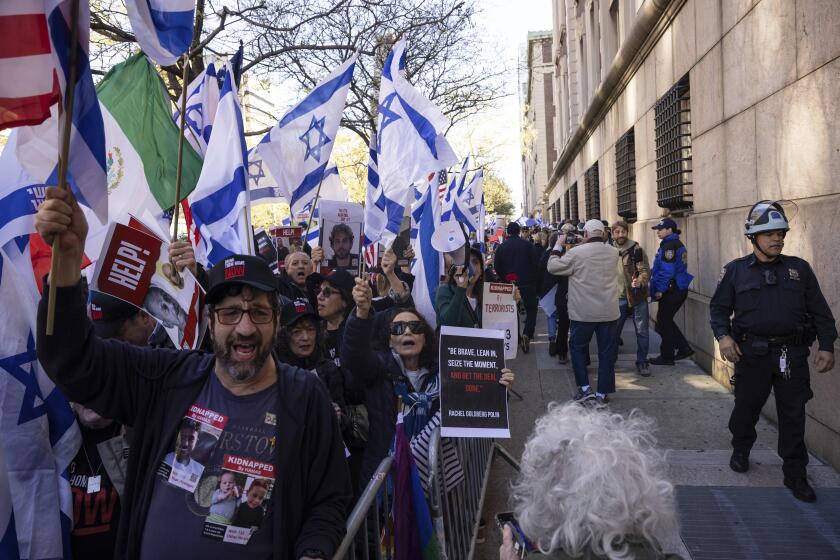American Indians Struggle to Feel at Home on Campus : Education: Colleges search for ways to provide Native American students with cultural and academic support in hopes of recruiting and retaining them.
Leaving the reservation to attend college wasn’t too difficult for Rozanna Benaly, a Utah teenager who had lived away from home at the Navajo Preparatory School in Farmington, N.M.
But it’s different this time. School is five hours farther away, there are more than 23,700 students on her urban campus and Benaly worries she won’t fit in at the University of New Mexico.
For hundreds of American Indian teenagers, going away to college can be a frightening experience--scarier than for other rural teens who leave behind their high school lockers.
“I think for any student coming to the university, it is a culture shock. But I think that is probably a little more exacerbated by folks who are coming from rural America or the reservations,” said Benny Shendo Jr., who heads Native American Programs at the University of New Mexico.
“That struggle to fit into a whole different worldview, different from their own, is complex,” he said.
In addition to worrying about the academic work, Benaly, of Montezuma Creek, Utah, is concerned about not seeing her family and not being able to attend traditional gatherings.
“If there is a ceremony going on at home, I won’t be there to participate in it,” she said.
For Benaly, missing her tribe’s traditional blessings and feasts will make life incomplete. “So for me, that doesn’t make the circle a circle,” Benaly said.
Higher education experts say American Indian students must overcome cultural hurdles in college--one reason their enrollment numbers are low and their retention rates even lower.
Although the number of American Indian students enrolled in college has inched upward in recent years, it remains small. Native American students accounted for fewer than 1% of all higher education students in 1996, says the American Council on Education’s most recent report on minority college students.
According to the U.S. Census Bureau, the nation’s American Indian population is young, with about half under 27--the average age of college students.
American Indians make up about 10% of New Mexico’s total population, with about half of them in their mid-20s or younger. But at the state’s public universities, Native Americans usually make up only a fraction of the student body.
At the University of New Mexico, American Indians represented 4.9% of the main campus student body for fall 1998. At Arizona State University, Native Americans make up about 2.1% of the student body.
In the University of California system and at the University of Nevada-Las Vegas, they make up less than 1% of students.
Getting American Indian students to stay in school is another task, experts say.
Paul Boyer, who has researched tribal colleges and American Indian education issues for the Carnegie Institute in Washington, D.C., says it’s difficult to quantify the problems that such students face.
“In the past 30 years there has been a growing interest in getting more Indian students into higher education. But it’s not enough to say ‘We’re going to admit you; our doors our open to you.’ The problem is not acceptance, the problem gets back to retention,” Boyer said.
Shawna Martinez, a Navajo from Farmington studying premed, says it can be tough to keep American Indian students on campus.
“I can understand, after their freshman year, how hard it is for them to stay out here,” said Martinez, who expects to graduate next semester from the University of New Mexico. “They say the freshman year either makes or breaks you.”
Although most American Indian students have support from their families, it’s more difficult to find cultural and academic support on campus, Martinez said.
Experts say that universities nationwide are beginning to pay more attention to struggling American Indian students by funding support groups and creating special orientation programs for freshmen to introduce them to one another and prepare them for the rigors of college life.
Montana State University, for example, has been working on its American Indian programs for more than a decade. Wayne Stein, head of the university’s Center for Native American Studies, says the key is connecting with students.
“The university has to make a special effort within the faculty ranks to reach out to American Indian students,” Stein said. “The first thing a university needs to look at is itself and ask, ‘Do we have a place on this campus that makes American Indian students feel welcome? Do we have a place where they can go and meet a counselor or advisor who is dedicated to them?’ ”
This semester, University of New Mexico officials are closely assessing the fruits of the first summer orientation program for American Indian students. The three-week program took place in July to help freshmen learn their way around campus and get a taste of academic demands.
Tilford Brown, a 25-year-old business major who is getting ready to graduate from the University of New Mexico next semester, said it’s important for freshmen to understand there are people and student groups they can turn to for help.
“Retainment of our students. That’s what we’re really striving for, trying to get these young students to work hard,” he said.
As long as students have support--at home and on campus--making it to graduation day is possible, said Karen Dahozy, a Navajo and president of the CIRCLE Society, a social group for American Indians at the University of New Mexico.
“I see a lot of them here, and they’re making it,” she said. “It takes a while but you just have to keep going.”
More to Read
Start your day right
Sign up for Essential California for news, features and recommendations from the L.A. Times and beyond in your inbox six days a week.
You may occasionally receive promotional content from the Los Angeles Times.






